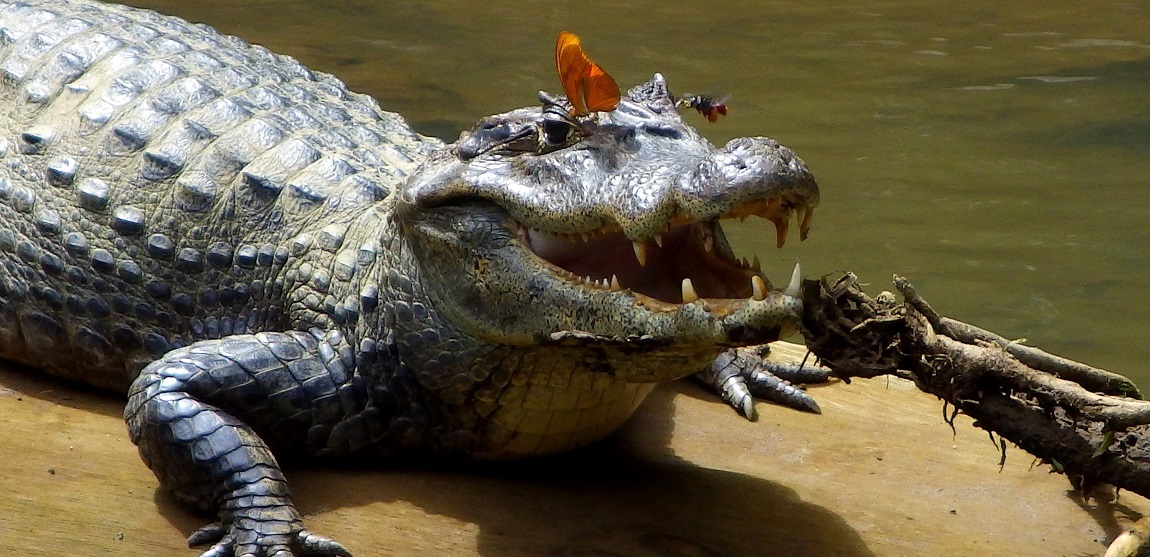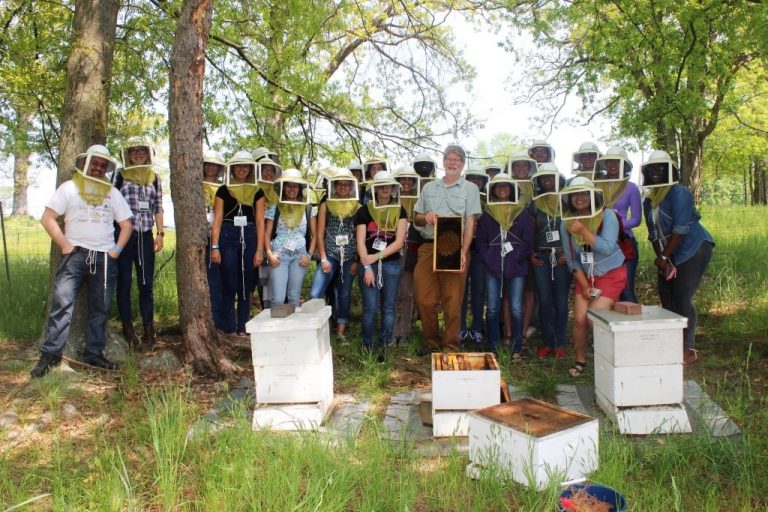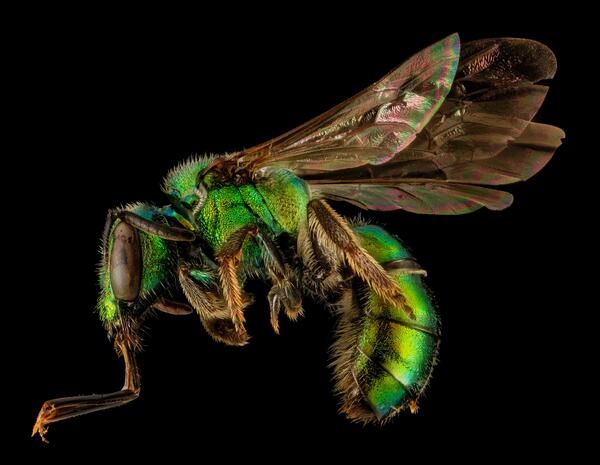
Crocodile tears please butterflies and bees
A Julia butterfly (Dryas iulia) and a solitary bee (Centris sp.) sip tears from the eyes of spectacled caiman (Caiman crocodilus) on Costa Rica’s Puerto Viejo River. Credit, Carlos de la Rosa

This year, we learned a lot about pollinators, especially native bees, bumble bees and honey bees at the 2015 SEEDS Leadership Meeting in North End, Md.
Read More
Here are some highlights from the latest ESA Policy News by Policy Analyst Terence Houston. Read the full Policy News here. DROUGHT: CALIFORNIA ORDERS MANDATORY CUTS IN WATER USAGE On April 1, California Gov. Jerry Brown issued a landmark executive order requiring state residents to cut their water usage by 25 percent through February 28, 2016. The first-ever water restrictions…
Read More
When it comes to bee tongues, length is proportional to the size of the bee, but heritage sets the proportion. Estimating this hard to measure trait helps scientists understand bee species’ resiliency to change. Ecologists will report on this and other pollination research news at the Ecological Society of America’s 2014 Annual Meeting in Sacramento, Cal., August 10-15. For…
Read More
A Julia butterfly (Dryas iulia) and a solitary bee (Centris sp.) sip tears from the eyes of spectacled caiman (Caiman crocodilus) on Costa Rica’s Puerto Viejo River. Credit, Carlos de la Rosa
by Liza Lester, ESA communications officer A honey bee (Apis mellifera) afflicted with Varroa destructor, a parasitic mite that sucks away its vital, blood-like hemolymph, often passing along viruses in the process, and leaving open wounds. The mite spreads by bee-to-bee contact, accelerated by yearly circuits of agricultural bee broods transported to pollinate almonds and blueberries and other crops. Varroa…
Miniscule oil amounts, major biological ramifications for fish: Trace amounts of oil from a spill can have harmful and lasting biological effects, according to Andrew Whitehead, a biologist with the Louisiana State University (LSU). Whitehead, along with Fernando Galvez (also an LSU biologist), led a study examining the biological effects of low concentrations of oil on fish in the Gulf…
Monitoring Pacific Walrus: With the end of summer fast approaching, US Geological Survey (USGS) researchers are once again gearing up to radio-tag walruses on Alaska’s northwestern coast as part of the agency’s ongoing study of how the marine mammals are coping with declining sea ice. “Sea ice is an important component in the life cycle of walruses. These tracking studies…
(Click the below image to view the photo gallery.) This week, the American Museum of Natural History launched the exhibit “Picturing Science: Museum Scientists and Imaging Technologies” which explores the images produced by scientists while performing research. The images range from bug genitalia to staghorn coral (see video at the end of this post). As quoted in a recent Wired…
If plants had a perspective, they would probably think of pollinators as more than just extra-friendly house guests. That is, plants would be more likely to view pollinators as the mutual friend who likes to set up blind dates. Bees might limit pollen to its use as a protein source for the hive, and birds might devour the flesh of…
This post contributed by Molly Taylor, ESA Science Writing Intern. Extreme weather: The rare multi-vortex that hit Joplin, Missouri on May 22 has claimed more than 100 lives and destroyed countless homes and buildings. Unfortunately, this is not the only natural disaster to devastate the U.S. this year. According to a recent Washington Post article, this storm season is turning…
National Parks Week: In addition to Earth Day activities, this week is also National Parks Week. Allie Wilkinson of the blog Oh, For the Love of Science! paid tribute with a mini-travel guide on Acadia National Park in Maine; the post is complete with trail information and scenic views (see below video). “Maine may as well be my home away…
Oysters proposed for cleaning up New York’s rivers, mall music has a bigger impact than boosting sales, cephalopods advance research in neuroscience and robotics, how gut bacteria might be shaping brain development and behavior and E.O. Wilson discusses a life of research on ants. Here are the remaining links from January. Oyster-tecture: The U.S. Environmental Protection Agency released a study…